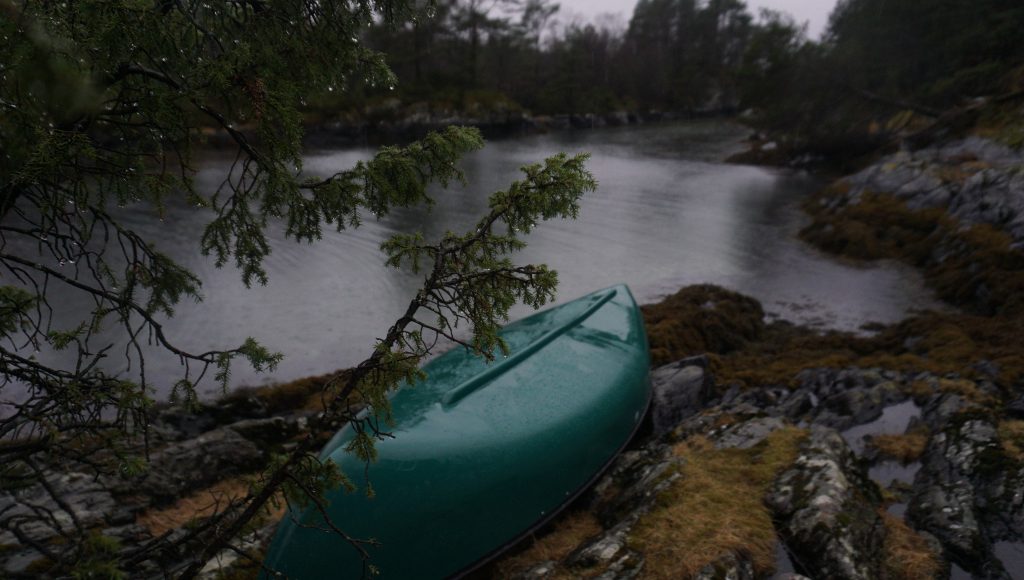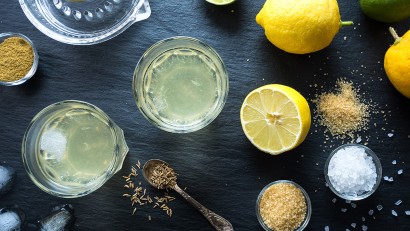
Kayaking in Fall and Winter: Don't Get Frozen Out of the Fun
Table of Contents [Show]
My wife and I are what you might call "digital nomads." A few years ago, after our son enlisted in the Navy, Anne and I decided to rent out our Traverse City home and hit the road in a 19-foot Fiberglas trailer insulated for cold weather road trips.
We had (and still have) the luxury of flexibility; she's a freelance technical writer, and I'm a semi-retired marriage and family counselor who's fully taken advantage of online therapy's growing popularity.
My own personal therapy, though, happens to be flatwater paddling. I guess you could say it works well for our marriage, too. Anne loves it as much as I do, and even though we spend a lot of time in close quarters, we enjoy our shared time on the water.
For us, the best paddling begins in fall.
Kayaking Was Made for Cold Weather
Before we joined the new wave of "young" full-time RVers (we're only in our early 40s here) we'd take advantage of the post-tourist-season peace and paddle all the way through the spectacular changing of the seasons. Forget New England; the fall foliage along Grand Traverse Bay and our other local waterways keeps would-be snowbirds from bailing out for warmer climates until the very last minute.
And once fall became our favorite time to kayak—without the noise of personal watercraft and ski boats—the idea of kayaking in the winter wasn't such a foreign idea.
After all, Inuit invented kayaks for hunting sea life in icy Arctic waters, and today's modern boats, gear, and kayak clothing make paddling a relatively safe cold-weather sport. If you have a buddy, decent skills, and the right outerwear, fall and winter kayaking isn't as extreme risk as you might think.
Gearing Up for Off-Season Paddling
Some might say it's safer to paddle in the off-season since rowdy speedboats aren't as likely to mow you over. On the other hand, the solitude means just that: You and your buddy are on your own. That's why it's important to be prepared.

Have the right boat
Since we have to make every square inch count, we invested in foldable, hybrid inflatable kayaks from Advanced Elements. The boats we have now been discontinued, but they resemble the Expedition Elite model. We had the two-person Convertible, but as I said... we already live in a tiny space; we don't want to push our luck when we're enjoying the great outdoors, so we sold it.
I'm not going to get into too much detail about kayak styles, but for winter and fall kayaking, you're going to want a boat that accepts a spray skirt. You'll also want a boat that's fairly stable, of course, so you can easily get back in if you fall out or flip.
Have you heard of an Eskimo roll? This is a technique in which you intentionally flip your kayak to drain any water in the hull, or self-rescue if that flip wasn't exactly on purpose. Most kayak styles don't require this skill, although the long, narrow, "touring" boats definitely do.
Either way, spend fifty bucks or so and sign up for a class. Most serious kayak shops offer them at community swimming pools, and the class benefits anyone who wants to "train" to hold their breath before falling sideways.
Your body's natural default is to gasp when it comes into contact into ice-cold water, and it goes without saying that's something you want to avoid.
My first kayak was a sit-on-top, and I loved it; they're pretty stable, easy to climb into from the water, and versatile, but they don't protect you as much from cold water and spray. But if you love to fish and want to do some kayaking in the fall or early spring, the best kayaks for fishing are custom-rigged sit-on-tops.

Stow Essential Safety Gear
Our cold weather kits aren't much different from our warm-weather essentials. We always carry a throw bag, which is essentially a high-quality rescue rope (or line, in boat speak) carefully packed into a small stuff sack. Every whitewater kit has one, and they belong in your flatwater gear as well.
Then, we each keep a small dry bag attached to our boat decks (I like to use carabiners, she uses the quick-release knot she used with her horses as a kid) with the following:
- 2 road flares
- Whistle (one on your PFD, too)
- Firestarter kit
- Camp towel
- Mylar emergency blanket
- Ultra-bright headlamp
- Water purification tablets
- Small first aid kit
That's our basic inland water kit. We don't do a lot of paddling on the ocean, but if we're up in Washington's Orcas Island where weather and tides can change on a dime (this is also something to consider in tidal marshes like Elkhorn Slough in Monterey Bay or Carmans River in New York), we always bring a beacon locator and a deck-mounted compass, and never go out in unfamiliar waters without laminated charts.
If you plan to kayak at night, you're legally required to use Coast Guard approved navigation lights whether you're off-shore or on inland waters, and never go out on the water without an approved personal flotation device (PFD).
Anne's has pockets in which she keeps a second set of emergency basics in case she gets separated from her boat; I hadn't had that in mind when I bought mine.
Dress for Wet Conditions & Warmth
We invested in breathable drysuits. They're not cheap, but they're nearly as important as your PFD, and they're the difference between an enjoyable outing on a chilly day and a paddle straight through the frozen jaws of hell. Drysuits have no insulating value, though, so we're careful about what we wear underneath.
Some online guides might advise you to avoid both cotton and wool when you're dressing for coldwater paddling (anytime the combined air and water temperature is less than 120F°) but we've done well with lightweight merino wool under our breathable suits, especially on our lower extremities.
Cotton, of course, is verboten; unlike wool, it doesn't keep you warm when it's wet, and the physical activity involved in paddling causes it to chafe.
Pick a dry suit that's on the large size so you'll have room for plenty of layers, but make sure what you wear underneath fits appropriately to your body shape.

Anne's paddling clothes
My wife's picky. In fact, on more than one occasion I've accused her of being a gear snob...not that that's a bad thing. She insists on high-quality women's outdoor clothing because it fits, breathes, wicks, and warms better than the "cheap (expletive)" available at big-box stores.
- Base layer: Merino-synthetic blend women's leggings and top; she likes thumb-holes on her sleeves to keep them from riding up.
- Mid-layer: Fleece zip-up sweater
- Pants: Synthetic sweat-type bottoms
- Socks: Any high-quality wool socks; she recently stocked us up on several pairs of J.B. Fields Expedition Merino Wool socks for all our outdoor adventures. So far, so good!
- Kayaking Gloves: Glacier Perfect Curve gloves
- Kayaking Hat: Anne has a million wool hats, and no particular favorites. She says she has to knit to get her mind off my driving when we're on the road.
- Footwear: Sometimes she'll throw on a thin, wicking performance sock and some neoprene booties.
My paddling clothes
I'm a little more laid back than Anne, but that doesn't mean I don't have my preferences. I use the same glove and sock brands though my paddling boots are a bit heftier, and I went a size up from my usual. Now that I think of it, I wear an "Anne-brand" hat, too.
Base layer: I don't like tight thermal shirts. I've got a Merino wool long-sleeve jersey, and running pants, which get a bunch of negative reviews for being unsuitable for anything less than very cold conditions. Ha, perfect! Anyway, this is the only underlayer I use for most of my winter kayaking trips, though sometimes I'll throw on an off-brand pair of polypropylene thermal bottoms.
Mid-layer: I'll either wear a zip-up long-sleeve fleece sweater or a fleece sweater vest. It might be me, but higher-quality fleece seems to smell better than the cheap stuff, and it certainly keeps you warmer, but I'll grab whatever's clean.
Kayaking Gloves: I get the best grip and insulation with NeoSport Five Finger Glove.
Don't forget to keep some dry, cozy, cold-weather kayak clothes in the car. If you do break a sweat, or get a little damp, you'll be grateful. Also: Cocoa and Schnapps'.

What's On the Horizon?
One of the great things about living on the road? We pretty much fly by the seat of our pants. We found some of our favorite kayaking waters on a whim, and we hope to add a few more to our list this year.
We just came back from the Northern Forest Canoe Trail (highly recommended) in Old Forge, New York, and we're headed to Utah to explore the slot canyons at Lake Powell. After that, we don't have any concrete plans until we head out to visit some friends in Austin; they're taking us out to their favorite places before Anne and I hit SXSW in early March.
But there's a lot of water between each of these destinations, and plenty of free time to get our paddles wet.
Featured image by Denisse Leon.


